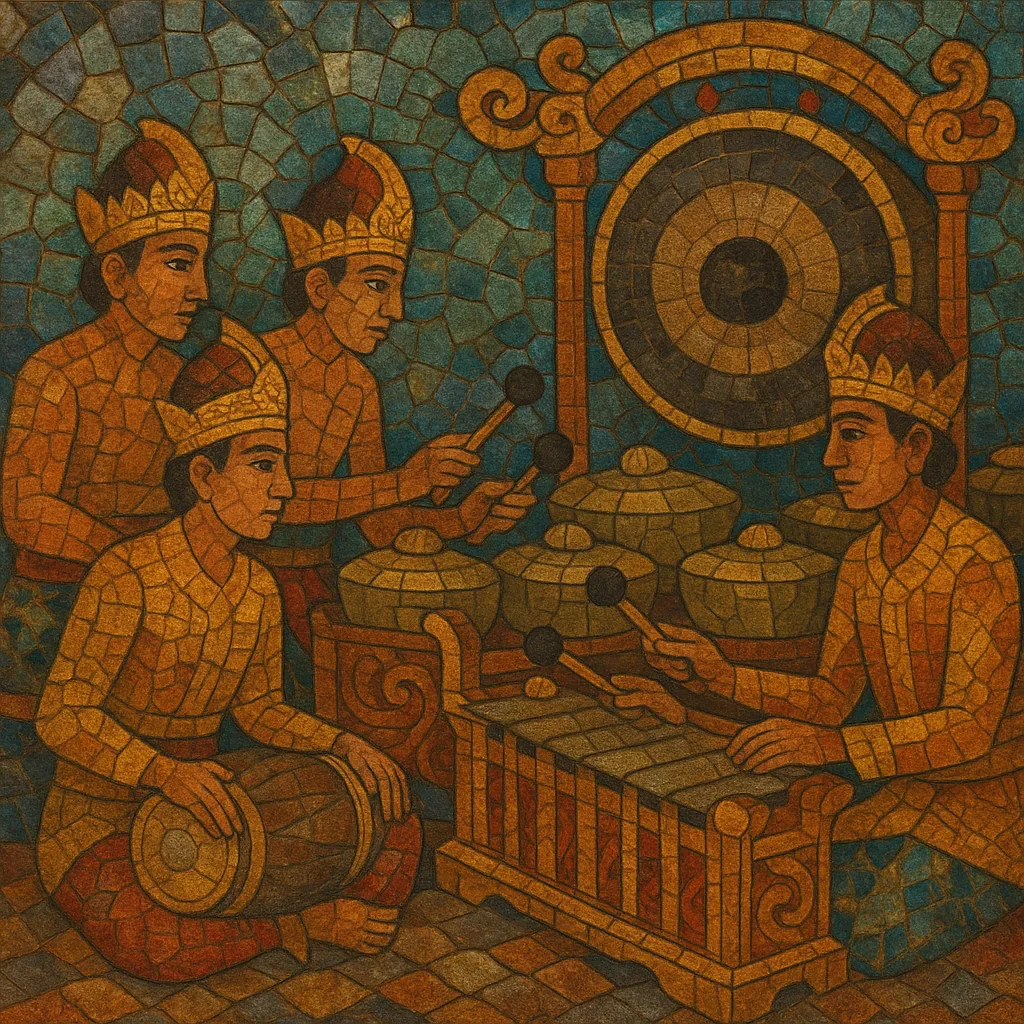Gamelan gong gede (literally "great/large gong") is a stately, ceremonial Balinese court-temple ensemble known for slow tempos, expansive cycles, and a profound sense of grandeur. It features very large bronze gongs and low-register metallophones that articulate long colotomic cycles, creating an enveloping, majestic sound.
Unlike the later, highly virtuosic gong kebyar style, gong gede emphasizes weight, spaciousness, and homophonic textures with minimal interlocking. It typically uses pelog saih lima (five-tone pelog) tuning, with paired instruments set slightly apart to produce the characteristic shimmering ombak (beating) that animates sustained sonorities.
Historically associated with royal courts and major temple festivals, gong gede accompanies processions and ritual moments where musical solemnity and power are paramount. Its repertoire consists of older tabuh forms that unfold in measured cycles, marked by the deep strikes of the gong ageng and guided by two-headed drums (kendang) and a timekeeper (kajar).
Gamelan gong gede crystallized in Balinese courts and major temples during the post-Majapahit era, reaching mature form by the 17th century. As royal and religious institutions consolidated ceremonial culture, large bronze ensembles were commissioned to project authority and sanctity. The music’s slow, weighty cycles, framed by the gong ageng, matched the solemn pace of processions and rites, while the five-tone pelog system provided a resonant, dignified palette.
Gong gede coexisted with other courtly ensembles such as semar pegulingan, but distinguished itself through larger instruments, deeper registers, and more spacious pacing. While Javanese court traditions informed its colotomic architecture and ritual function, the Balinese approach emphasized brilliant bronze timbres, paired tuning (ombak), and a heightened ritual presence suited to temple contexts.
Following Dutch colonial incursions (early 1900s) and the subsequent transformation of court life, gong gede gradually ceded public prominence to the emerging gong kebyar (early 20th century), with its faster tempos and flashy techniques. Yet gong gede persisted in temple settings and in communities maintaining older repertoires. Academies and cultural organizations in the late 20th century (e.g., in Denpasar) documented, taught, and revived classic pieces, ensuring the ensemble’s continued ritual role.
Today, gong gede is performed primarily for odalan (temple anniversaries) and other sacred observances, where its grandeur remains integral to the ceremonial soundscape. Field recordings, archival projects, and community sekaa (ensemble associations) help sustain the tradition, while its structures and timbres continue to inform newer Balinese genres and ritual performance practice.


